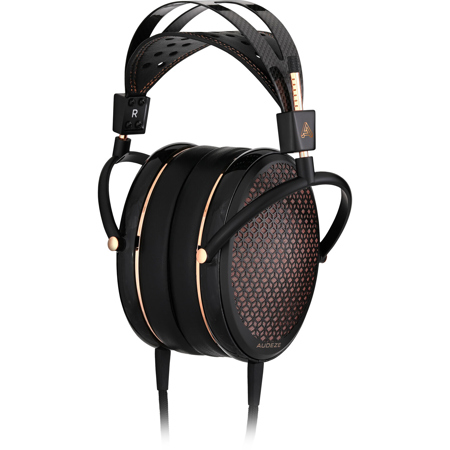



See Options
Need help? Ask our experts.
Review Summary
Black
Earcups: Premium leather
Headband: Carbon fiber and premium leather
Over-ear, open-back
Push-pull electrostatic
580 VDC Stax Pro Bias
100 pF (including cable)
Ultra-thin polyimide film with infused carbon nanotubes
SLAM Technology for earcup pressure relief and bass enhancement
120 x 90mm
10Hz - 40kHz
>120dB
<0.1% @ 90dB
100dB, 1KHz, 100V RMS
8.2' (2.5m) OCC monocrystal copper, 5-pin Pro Bias
Magnesium, stainless steel, and polymer acetate
16.93 oz (480g)
819343015578
Introducing our most advanced headphone yet - CRBN2 - which pairs second-generation carbon-nanotube electrostatic drivers with another new breakthrough technology. Experience the most powerful, tactile bass response of any electrostatic headphone, and vividly holographic spatial imaging.
SLAM Technology
Symmetric Linear Acoustic Modulator - Tuned to enhance bass frequencies and lower distortion - Maintains optimal pressure distribution on the diaphragm - Patent pending. SLAM gives CRBN2 the most life-like physical bass of any electrostatic headphone, with natural detail presentation and immersive stereo imaging.
Second Generation Driver
Pushing the boundaries of electrostatic technology - Our patented carbon nanotube-embedded driver film is made in house, allowing us to precisely control the electrostatic force across the driver to attain the most accurate sound possible
Luxuriously Built
CRBN2 is engineered from materials of the highest quality: magnesium, carbon fiber, premium leather, stainless steel, and polymer acetate.
Precision Crafted
Each CRBN2 is hand-assembled and tested in California by electrostatic specialists, finished to the utmost standards.
High Voltage
CRBN2 requires an amplifier with electrostatic output using 580VDC bias, also known as "Stax Pro Bias." A number of suitable amplifiers on the market from a variety of brands will drive CRBN2 well.
Heritage of Innovation
CRBN2 is based on a project to produce headphones for use in MRI machines, between Audeze and a team from UCLA School of Medicine. Due to the powerful magnetic fields of an MRI, the headphone could not use ferrous metals, so researchers developed the carbon nanotube film electrostatic driver.